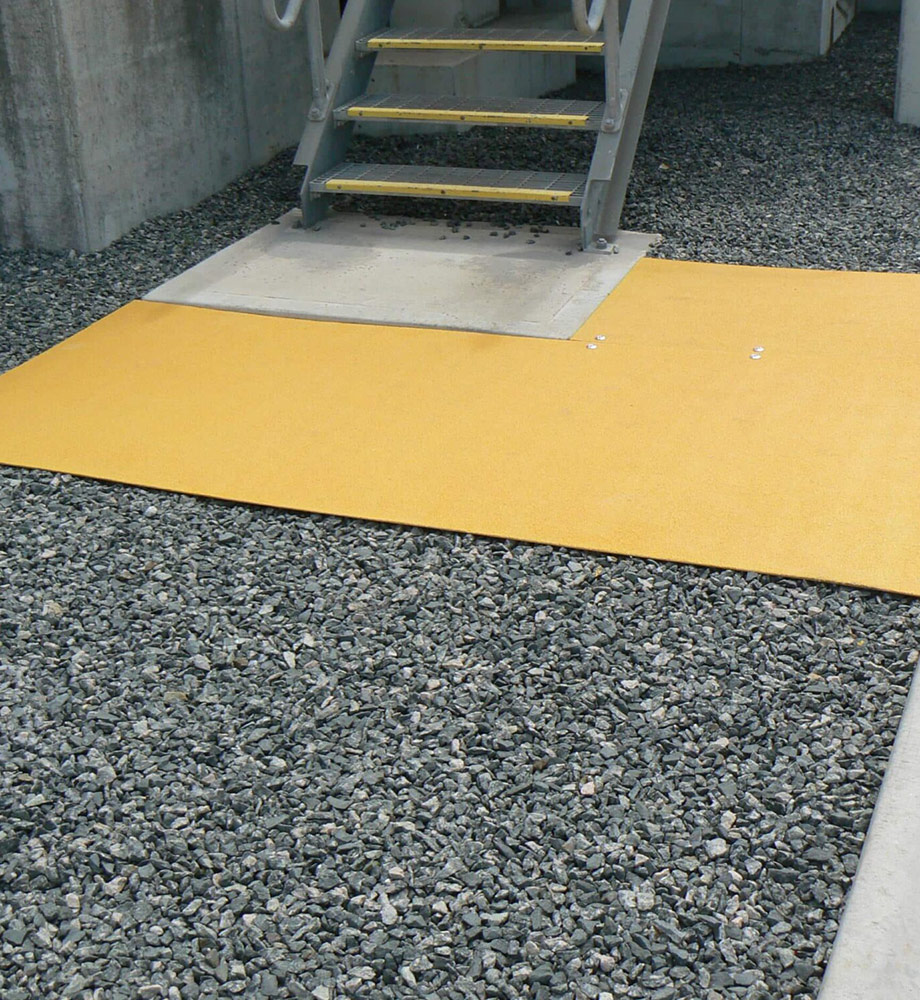Key Features
- Available with patterned (chequered) or grit finishes; fiber-reinforced polyester or vinylester matrix; high tensile and compressive strength; can be bonded to steel frame.
Benefits
- Unlike steel plate, FRP floor plates never rust or corrode, even in saltwater or chemical exposures. They are thermally insulative (no heat transfer) and electrically non-conductive. Because they’re lighter, they reduce structure weight and are easier to handle. Maintenance costs are very low.
Applications
- Ground-level floors, trench/top covers, checkered plate flooring, boat/ship decks, machine room floors, platform overlays, and outdoor decks. The gritted solid plates are widely used for walkways, pool decks, bridge decks, and trench covers.
Technical Specifications
- Thickness commonly 4–6mm (small loads) up to 10mm+ for heavy loads. Load rating depends on support: e.g. 6mm FRP gritted plate can support 500–1000 psi. They meet slip-resistance standards (ASTM D2047 >0.6 static COF for gritted).
Unique Selling Points (USPs)
- FRP floor plates can be custom-molded with logo, tread pattern, or color. They endure UV sunlight and harsh chemicals. For high-traffic corridors, a smooth FRP floor plate with a slip-resistant coatings offers an easily replaceable “top layer” without full floor rebuild.

